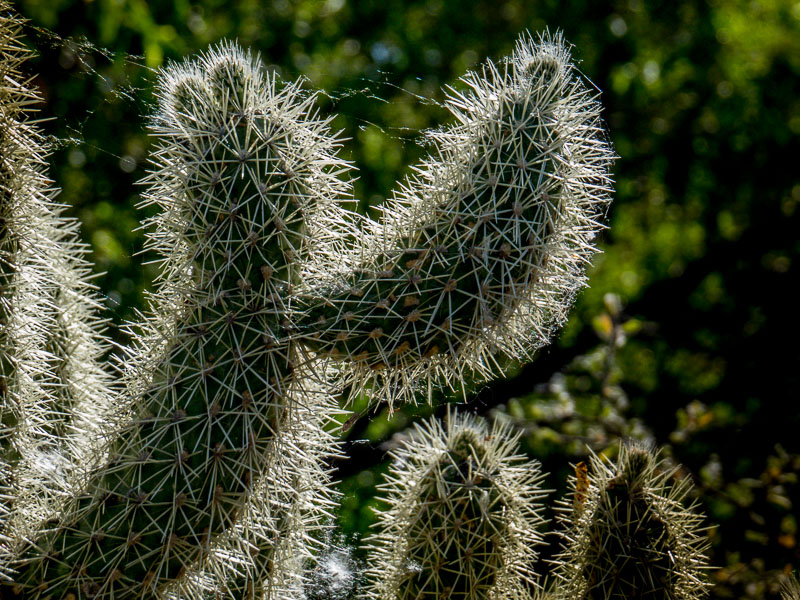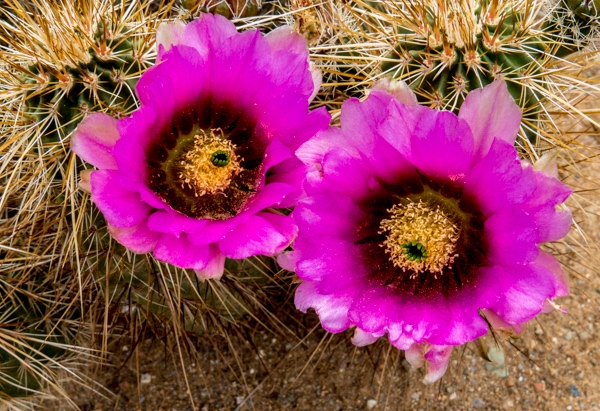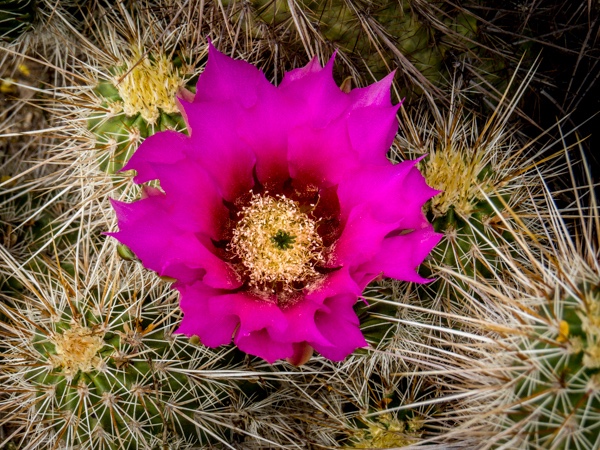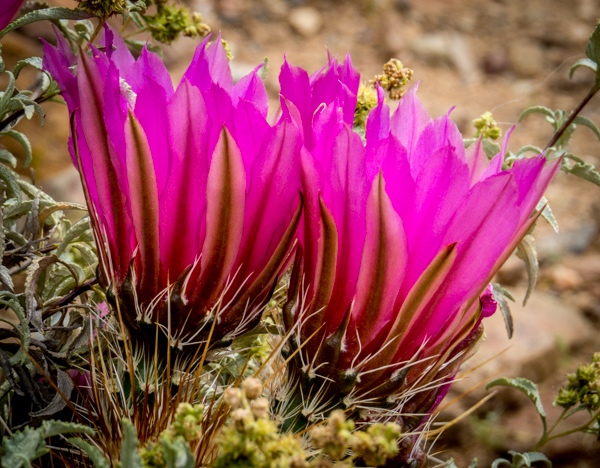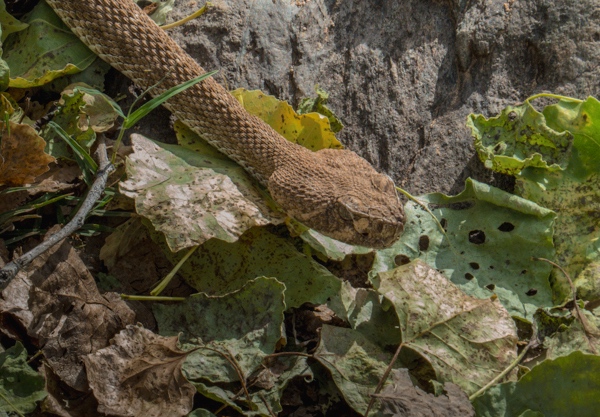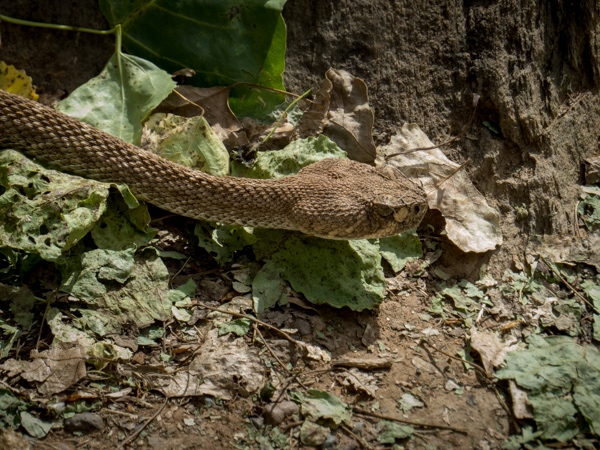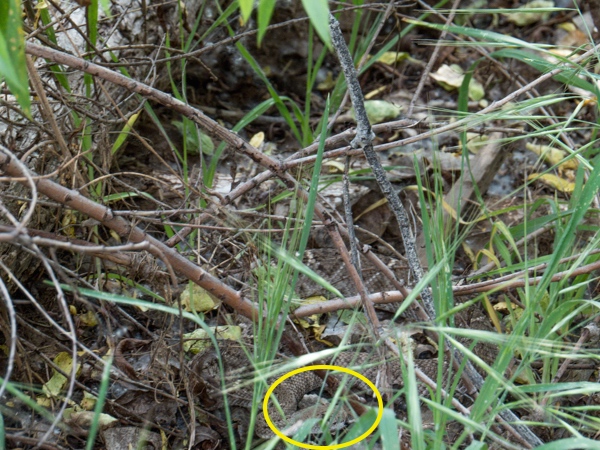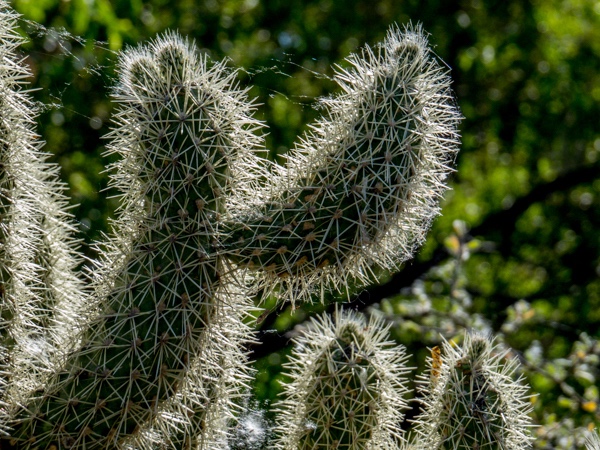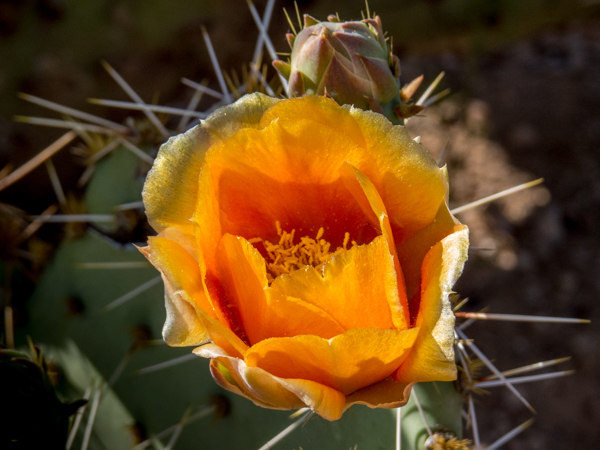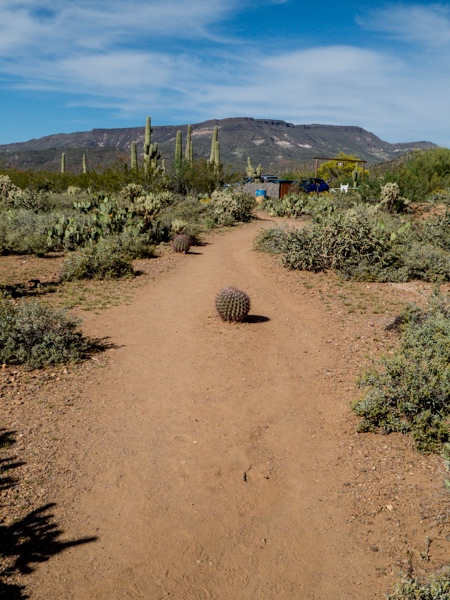For those who are unfamiliar with the Sonoran Desert around North Phoenix, let me explain what happens during the heat of the summer through the middle of September.
The desert often creates strong dust storms and rain storms. These are customarily referred to as “monsoons” although technically they probably do not meet the necessary criteria for such a designation. Read more about our desert monsoons HERE!
During these storms, the Sonoran Desert receives much of its yearly rainfall. This past week, we had some very strong storms with winds and much rain.
When the “monsoon” storms arrive, there are desert plants that respond by soaking up the moisture and using the opportunity to bloom and produce seeds.
The picture below shows one such plant across the street from our house which is basically “the desert”.
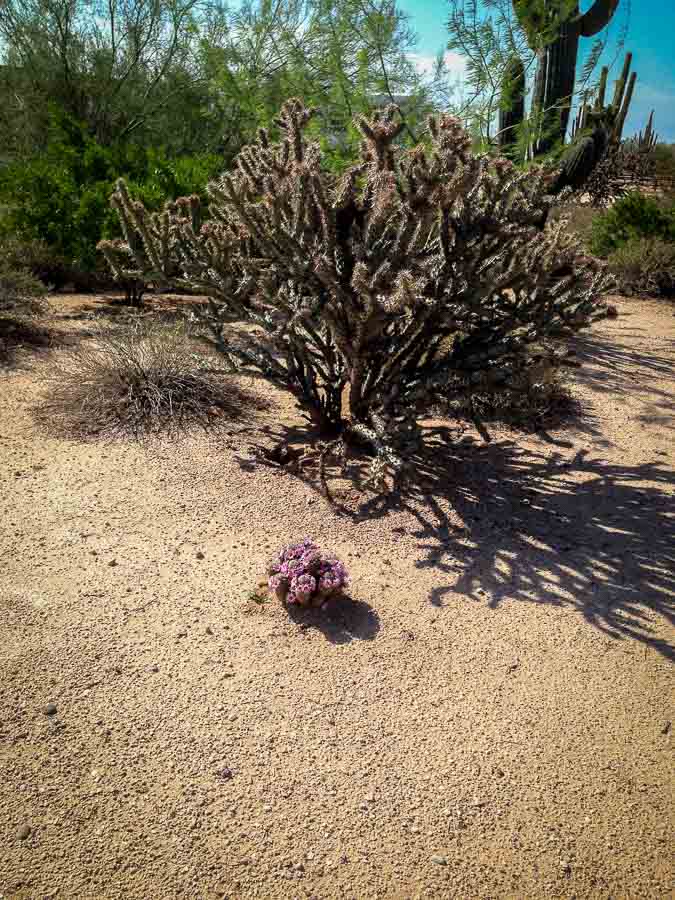
The large plant in the center/top of the photograph that looks like it has antlers is a cholla. This is one plant that people try to avoid because it is segmented with a multitude of needles. The needles grab on to clothing, skin, leather or almost anything and a segment then breaks off and goes for a ride with the bearer. This is one way the cholla propagates.
In front of that large pant is a smaller cluster of cacti. This is a mammillaria and it produces a variety of pinkish flowers that nearly look artificial. They are very attractive and seem as if they would be at home in a tropical drink at the local brew pub.
Here is a closer look…
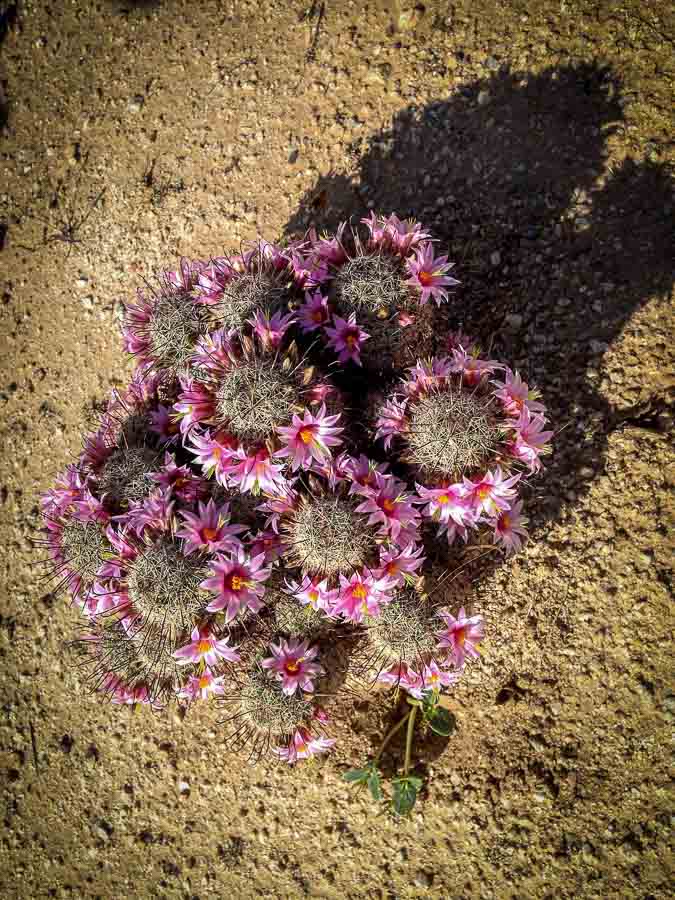
This is a non-cultivated plant that grew on its own. We do enjoy having it in our neighborhood!
